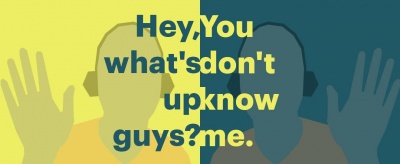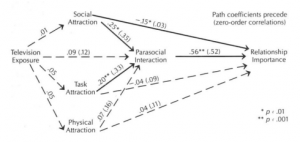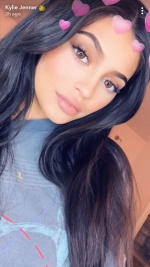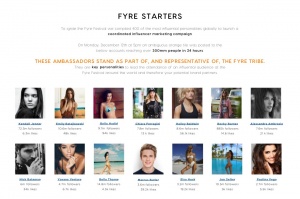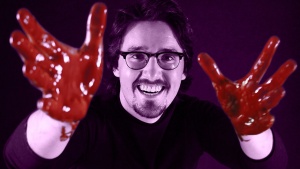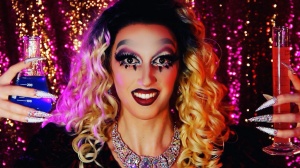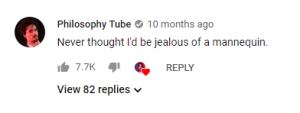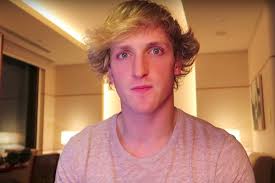Parasocial Relationship
Parasocial relationships are one-sided relationships between social media consumers and online influencers or celebrities in which the media consumer interacts with the celebrity through means of social media while the other party or celebrity is entirely unaware of the consumer's existence .[1] Common examples include a student and a college athlete, a young child and a teenage heartthrob, and everything in between. The media consumer invests emotional energy, interest, and time into interacting with the other party by engaging with their social media comment and following their posts or actions over time. The influencer or celebrity partakes in the relationship by engaging with the entire audience of viewers through talking informally, posting engaging content, and asking viewer questions. Through these actions, the celebrity can create an illusion of intimacy that the consumer believes to be an interpersonal relationship.
Contents
History
The formation of parasocial relationships can be dated back to the existence of humanity, in which individuals formed bonds with popular figures such as politicians, gods, and spirits.[2] Entertainment also provided a source of parasocial relationships as audiences bonded with their favorite characters in plays, films, and television. The extent of parasocial relationships developed as time went on and media sites became more prevalent in society.
Despite its longevity, the term parasocial relationship was only coined by sociologists in 1956.[2] They noted that audiences would act as though they were involved in a social relationship with their idols, despite never having met them. They initially speculated that this was due to a lack of social interaction, but this was later refuted.[2] Today, the standard view on parasocial relationship formation is that they are closely related to friendship formation.[3]
How do parasocial relationships form?
Forming a parasocial relationship is similar to forming a real friendship.[3] At the start of new friendships, frequent, regular communication reduces uncertainty between two parties. This reduction then increases the frequency and regularity of communication and leads to interpersonal attraction. Finally, the positive correlation between interpersonal attraction and intimacy causes the the two people to become closer.
In the information age, parasocial relationships are propagated by the changing nature of friendship itself. Rather than engaging with friends solely through face-to-face interactions, friends also perform themselves online, interact digitally with the online-counterparts of their friends by liking and commenting on each other’s’ posts, responding to messages and posting videos.[3] Many friends even limit their interactions to exclusively digital ones. The blur between digital and real-life interaction has made it easier than ever for personalities to perform friend-like interactions. With this friendship culture, it is easy to mask a parasocial relationship with a real one. Creating posts, pictures, liking fan activity, and sending fan messages is far less labor-intensive than real-life relationship cultivation, and personalities can use bots, social media assistants, and other services to perform engagement with audiences to further propagate the parasocial relationship.
This cycle is easily translatable to media. Audiences are regularly exposed to a personality by consuming their media, increasing the personality's appeal. This exposure attracts audiences to the personalities; eventually, audiences perceive themselves to be in an intimate relationship with the personality, despite the two parties having never interacted.[3] In this case, the relationship is one-sided although to the viewer it may not seem so due to the celebrity's constant posting and encouragement of interaction between he/she and his/her fans.
Platforms and Use Cases
Today's social media platforms enable the formation of these strong relationships. Influencers and other social media personalities who have the strongest relationships with their followers are often YouTubers. This is because creating videos really allows viewers to get a sense of the world their favorite influencer is living in, and feel like they are an included part of it. These relationships deepen as influencers can be followed on many social media platforms, such as Instagram, Snapchat and Twitter.
Platforms that enable Parasocial Relationships
Kylie Jenner's Snapchat
Kylie Jenner was one of the first influencers to make a public snapchat. Snapchat had previously been a fairly private form of communication between close friends. However, Jenner's publicly available snapchat opened the door for anyone who wanted to become her "friend." These followers were taken along for the ride of her everyday life, which allowed people to feel personally connected to her simply based on the nature of the platform since it only allows for real-time posting. Now, many influencers and other famous people have public snapchats, and this phenomenon continues to grow.
Miquela Sousa
Miquela Sousa, also known as Lil Miquela, is a fictional and digital art character that has an Instagram following of over a million users. This art project started in 2016 as an Instagram page, with it claiming Miquela to be an instagram model from Downey, California and over time the page has amassed a million followers. In 2017, Miquela released her first single "Not Mine." People's fascination with virtual celebrities that do no exist in real life, such as Miquela, is a prime example of the growing popularity of parasocial relationships. [4]
Live Videos
YouTube and Instagram have both introduced live video streaming. This is a feature where someone begins recording themselves, and viewers can tune in live to chat with/ask questions of the person streaming. This is another popular way in which famous people and influencers connect to their users and make them feel like they are actually interacting on a personal level as friends.
All of these platforms allow viewers to feel involved in an influencer's life on multiple levels, and this strengthens the parasocial relationship.
Polls and Question and Answer Videos
Instagram allows users to add polls to their stories, allowing viewers to respond the question posed. Often, social media influences ask their viewers for opinions on what to wear, what color to change their hair, or what idea they like better. This engagement makes viewers feel even more involved in an influencer's life, making the relationship more real. Polls like this are also created on Twitter.
Similarly, sites like Ask.fm, allows users to create profiles so that they can be asked questions by anyone. Influencers often link to their Ask.fm in their social media biographies.
Youtube Q&A's
Influencers frequently create question and answer videos, where they compile a list of questions their users have left as comments or sent in DMs. These personal shoutouts and responses contributes to the relationship between the influencer and viewer.
Ethics
The ethics of parasocial relationships exist at the boundary of performance and truth.
In Stanislavsky's[5] view of performance, truth is a relationship between an actor and the audience. Youtube content creators must perform in ways that parallel ancient acting. In Hamlet, though everyone knows that there are no such things as ghosts, audiences and actors both suspend their belief, acting and reacting as if the ghost of Hamlet's father were real in order to enhance their enjoyment of the play. The suspension of disbelief is dependent on the audience's willingness to do so, as well as the actor's ability to convey the emotional truth required in the situation. Forging a legitimate emotional connection is dependent on a good performance.
In the context of parasocial relationships, personalities do not have to be authentic. They must be skilled at encouraging audiences to suspend their disbelief and instead believe that their media interactions are genuine. For example, a YouTuber might be paid $70,000 to perform a negative product review. The success of the performance is dependent on maintaining secrecy as well as the YouTuber's ability to convey the emotional truth of disliking the product. In one case, makeup influencer MannyMUA was able to create a semi-authentic video performing his hatred of makeup product Lashify, but news leaked that he had been paid handsomely by a competing company (Lilly Lashes) to do so. This nullified the audience's ability to believe his hatred of the product.[6]
A bad theatrical performance garners a bad review, and potentially causes the actor to lose some work. A bad social-media performance garners mass-scale online public shaming. MannyMUA received extreme backlash when news of Lilly Lashes' $70,000 "sponsorship" leaked. This in combination with other scandals ultimately led him to lose half a million subscribers.[7]
"Effective" and "Ineffective" Performances
From this examination of parasocial relationships from a performance-ethics standpoint, it can be concluded that an effective performance is dependent on (1) the influencer's ability to generate suspension of audience disbelief and (2) that no conflicting outside information emerge otherwise. This is highly related to the influencer's ability to encourage both primary and secondary trust in a virtual environment.[8] Primary trust is the trustworthiness of an individual from a factual point of view: are they being honest? Secondary trust is the belief that the other "cherishes one’s esteem" and will "reply to an act of trust in kind (‘trust-responsiveness’)."[8] Thus, primary trust is generated by Factor 2, while secondary trust is generated by Factor 1. Effective performances create both primary and secondary trust. Ineffective performances broach primary trust as directly conflicting information emerges. This then leads audiences to doubt their secondary trust in the influencer and perceive them as fake.
It should be noted that the parasocial relationships are just one of the many ways that audiences interact with their media personalities. Thus, influencers with effective parasocial performances might not necessarily have more fans or financial success than influencers with ineffective parasocial performances. In other words, one can have an ineffective parasocial performance and still be successful, as evidenced by many real-life figures.
Influencers and Bullshit
Influencers in a parasocial relationship hold a large amount of power in, as it is aptly named, influencing their followers. When examining the motives of these influencers in these relationships, one can see that their actions would fall under Harry Frankfurt’s definition of a “bullshitter”, which he describes as “[the bullshitter’s] eye is not on the facts at all, as the eyes of the honest man and of the liar are, except insofar as they may be pertinent to his interest in getting away with what he says”[9]. While influencers tend to preach their values and commitment to posting content that they truly support, many influencers are also driven by monetary matters and success. According to Frankfurt, these influencers maintain an interest in promoting their overall influence and status through means of posting and performances, which therefore makes their content bullshit and themselves bullshitters.
This power of influencer’s bullshit has seen large scale consequences in recent years. The recent Fyre Festival scandal, where people were deceived into buying into what was supposed to be a luxury music festival in the Bahamas, only to find that everything they signed up for was not there such as musical artists, large villas, and gourmet food. A large takeaway from this scandal was analyzing the role Instagram influencers played in advertising the event. Celebrities like Kendall Jenner and Bella Hadid, whose profiles boasted millions of followers, posted advertising posts depicting the luxury festival promo videos[10]. The celebrities themselves were coned into believing and promoting in a bullshit festival. These posts describing the event turned out to be bullshit, and their followers were manipulated by these posts left to deal with the financial and emotional fallout of the disastrous event. Tana Mongeau's Tana Con is another event that was shut down before completion letting down those that bought a ticket and her fans across all social media. Tana had even convinced fellow youtubers that the event would succeed despite her knowledge that it would fail. This shows the power of manipulation and bullshits role in parasocial relationships and should give people caution before succumbing to the influence of those they follow.
Effective Influencers
These influencers tend to be intentional in the types of content they create. They are aware of their parasocial relationships with their audiences and ensure that no conflicting outside information can be used to sabotage their credibility.
Oliver Thorn / PhilosopyTube
Oliver "Ollie" Thorn is a British Actor and YouTuber of the channel PhilosophyTube, which explores everyday phenomena and social issues through a philosophical lens. Viewers cultivated a parasocial relationship with Thorn as an internet-friendly, humorous philosophy professor. Their parasocial relationship deepened when Thorn opened up in his video titled "Suic!de and Ment@l He@lth,"[11] in which Thorn explored the philosophy of mental illness and patient rights while revealing that he too struggled with depression.
Following this video, Thorn's YouTube viewership and Patreon donations increased substantially.[12] Thorn later analyzed the parasocial relationship between him and his fans in a second video, concluding that YouTube is a performance. Through his videos, Thorn convinced his audience to suspend their disbelief that they were merely staring at a computer screen, and to instead believe that Thorn was a cosmonaut having a life-threatening suicidal breakdown or a YouTuber being interrogated by Scotland Yard for the crime of "deceiving" his audiences. The authenticity of these situations cannot be threatened by outside information because they were exaggerated to begin with - everyone knows that Thorn is neither cosmonaut nor criminal. Audiences instead connect with the emotional truths in those situations - feeling hopeless and overcome with depression or feeling conflicted and unsure of what truth means when one is a public persona - while learning philosophy.
Natalie Wynn / Contrapoints
Natalie Wynn[13] is a self-titled "ex-philosopher" and transgender YouTuber whose channel similarly examines social issues. Viewers cultivated a parasocial relationship with Wynn through her penchant to perform as highly exaggerated personas, as well as her highly-public gender transition. Similar to Thorn, Wynn uses the exaggerated approach, birthing characters with colorful hair, long nails, and outrageous attitudes to ensure that her authenticity cannot be questioned in midst of all of the exaggeration.
For superfans of Wynn and Thorn, another aspect of their parasocial relationship lies in the "ship" between them. Similar to 'ships' in Fan fiction, fans are obsessed with the idea of a potential relationship between ContraPoints and PhilosophyTube because they have good chemistry on camera and produce videos on similar topics. Wynn and Thorn encourage this ship by performing it on their YouTube accounts by flirting with each other in the comments.[14] They also perform it on other platforms.[15]
Marlena Stell
Marlena Stell is a makeup influencer and founder of cosmetics company Makeup Geek. As an influencer, stell cultivates a parasocial relationship with her audience by presenting herself as a relatable, confident woman trying to navigate the complexities of makeup, fashion, and life. She is one of the early influencers of the YouTube Beauty Community.
Stell is intentional about the parasocial relationship she has with her audience, aiming to inspire all women.[16] She increased her authenticity by creating a video titled "My truth regarding the beauty community," detailing all of the dishonest, manipulative, and greedy tactics that influencers do behind their fans' backs with a logical, mature approach. Though Stell was attacked by fellow influencers, she stood behind her arguments, thereby performing consistency and integrity in her beliefs. Following this video, Stell gained about 25 thousand subscribers, indicating that fans resonated with her message and positively responded to their enhanced parasocial relationship.[17]
Ineffective Influencers
These influencers tend to not be as aware of the parasocial relationship they have with their audiences. They thus say, do, or create content that spurs controversy and undermines their authenticity.
Olivia Jade
Olivia Jade Gianulli is a 19-year-old influencer. Her young, mostly-female viewers cultivated a parasocial relationship with Gianulli due to a combination of her down-to-earth personality and her luxurious lifestyle, which made audiences feel like they could be her best friend despite their differences. Comments on Gianulli's Instagram[18] showcase this attitude, with young women commenting "Beautiful!" and "You are amazing and gorgeous!" while others asked her where to get her dress and other clothing items she wore.
Gianulli's parasocial personality as a relatable, rich friend fell apart in light of the college-cheating scandal.[19] Fans felt slapped in the face by her involvement in such a large scandal, the fact that she was so privileged and that her family was able to buy her way into USC. She was no longer the relatable friend they had come to know.
As a result of this backlash Gianulli has disabled comments on her YouTube channel. She has also lost many valuable brand deals and is possibly facing expulsion from USC.[20]
Logan Paul
Logan Paul is a 22-year-old American YouTuber and vlogger known for his comedic antics and pranks. Though his antics have always been brash and abrasive, they resonated with his audiences, who found them humorous. He thus cultivates a parasocial relationship by appealing to his demographic.
In January of 2018, Paul uploaded a video titled "We found a dead body in the Japanese Suicide Forest…", in which he filmed a dead body, "holds back a laugh and says, 'this was all going to be a joke; why did it become so real?'"[21] This video negatively affected his parasocial relationship with his audience, who felt that despite Paul's brash antics, laughing at a dead body proved to be too much. Paul claims he lost approximately $5 million in revenue following the controversy and has since apologized many times and changed the nature of his content to be less abrasive.[22]
Shane Dawson
Shane Dawson is a YouTuber who rose to fame in 2008 and has racked up over 21 million subscribers. Dawson is known for creating comedic content that features dark humor in relation to his past. In his early days on YouTube, his content tended to be controversial, including videos in blackface and using AAVE when playing his videos' characters. Although Dawson rebranded his channel to focus more on documentary-style content, viewers took to the internet to warn others about his history of controversial content. Dawson apologized for this behavior but continued to be involved in scandals leading to his decline.
In 2018, a scandal occurred involving Dawson using jokes that involved pedophilia towards a six-year-old Instagram model. [23] Dawson used inappropriate language to describe this child's content in his podcast, leading to an uproar on the internet spreading awareness of the situation and reaching audiences worldwide. Dawson created a video addressing the situation and apologizing, allowing him to gain back some loyalty from his viewers. In March of 2019, footage resurfaced from a video Dawson filmed in 2015 where Dawson mentions having sex with his cat. The video quickly spread and the situation became a trend on Twitter leading to Dawson apologizing through a thread of tweets. [24] The chain of scandals that occurred has caused Dawson to lose fame and the parasocial relationship he once had with his rather young followers.
Tana Mongeau
Tana Mongeau is an Internet personality and rapper who has over 3.9 million subscribers on Youtube. Tana is most famous for her her failed event, TanaCon, and her controversial videos. Her rise to fame began on Youtube with her "Story time" videos in which she maintained a par asocial relationship with her fans and retold interesting stories of hers, such as someone hacking into her email. Her controversial videos include those about her relationship with ex Disney star, Bella Thorne, and a video in which she speaks about the use of the N-word.
On May 26, 2018, Tana announced she would be hosting her own convention, named TanaCon. Her convention was set at the same time and only a few blocks away from VidCon and annual Youtube centered: community festival, creator conference, and industry summit. She intended for TanaCon to be an alternative to VidCon in response to her own negative experiences with the convention.[25] The event lasted less than 6 hours before being shut down for overcrowding. Tana promised free tickets that would allow access to performances by famous YouTuber influencers, with VIP tickets promising a fast pass for influencer meet & greets and a goodie bag.[26] When TanaCon fell well short of promises, the backlash quickly spread throughout social media.[26] Through a series of videos, released by Shane Dawson, TanaCon was explained to the fans. Tana knew she had oversold tickets, booked a venue incapable of holding such event, and promised a convention that would fail. She bullshitted her fans and deceived her fellow Youtube friends. She has since made an apology video and did not refund customers as requested.
References
- ↑ "Meet Lil Miquela: Fashion's First Virtual Instagram Influencer" https://www.highsnobiety.com/p/lil-miquela-virtual-influencer-instagram/?format=amp
- ↑ Stanislavsky, K., & Hapgood, E. R. (2014). An actor prepares. Bloomsbury.
- ↑ Martineau, P. (2018, November 19). Inside the Pricey War to Influence Your Instagram Feed. Retrieved from https://www.wired.com/story/pricey-war-influence-your-instagram-feed/.
- ↑ Mannymua733 YouTube Stats, Channel Statistics.(n.d.). Retrieved from https://socialblade.com/youtube/user/mannymua733.
- ↑ 8.0 8.1 de Laat, P.B. Ethics Inf Technol (2005) 7: 167. https://doi.org/10.1007/s10676-006-0002-6.
- ↑ Frankfurt, Harry (2009). On truth, lies, and bullshit. In Clancy W. Martin (ed.), _The Philosophy of Deception_. Oxford University Press. pp. 37.
- ↑ Kleinman, Zoe. “Has Fyre Festival Burned Influencers?” BBC News, BBC, 22 Jan. 2019, www.bbc.com/news/46945662.
- ↑ Thorn, O. (2018, September 28). Suic!de and Ment@l He@lth. Retrieved March 28, 2019, from https://www.youtube.com/watch?v=eQNw2FBdpyE.
- ↑ ContraPoints. (n.d.). ContraPoints. Retrieved from https://www.youtube.com/user/ContraPoints
- ↑ Wynn, N. (2018, May 02). Jordan Peterson. Retrieved March 29, 2019, from https://www.youtube.com/watch?v=4LqZdkkBDas&t=574s.
- ↑ Wynn, N. (2019, February 10). Natalie Wynn on Instagram: "I trapped a nice English boy into showing me around Edinburgh. Retrieved from https://www.instagram.com/p/BttG1GFBrFs/.
- ↑ Stell, M. (n.d.).Marlena Stell. Retrieved from https://www.youtube.com/user/MakeupGeekTV/about
- ↑ MakeupGeekTV YouTube Stats, Channel Statistics. (n.d.). Retrieved from https://socialblade.com/youtube/user/makeupgeektv.
- ↑ Gianulli, O. J. (n.d.). OLIVIA JADE on Instagram: "party pants". Retrieved from https://www.instagram.com/p/BcypviSFS6q/.
- ↑ McCarthy, T. (2019, March 14). Lori Loughlin's kid Olivia Jade had 'fun' doling out college admissions advice days before mom's scandal. Retrieved March 28, 2019, from https://www.foxnews.com/entertainment/lori-loughlins-daughter-olivia-jade-talked-about-college-admissions-with-fans-days-before-moms-scandal-broke
- ↑ Spangler, T. (2019, March 15). Olivia Jade, Lori Loughlin's Daughter, Stands to Lose Brand Deals Over College-Admissions Scandal. Retrieved from https://variety.com/2019/digital/news/olivia-jade-lori-loughlin-college-scam-influencer-brand-deals-1203162624/
- ↑ Kidwell, E. (2018, January 11). Logan Paul (and the internet) need to stop treating Japan as clickbait. Retrieved from https://www.theverge.com/2018/1/11/16875188/logan-paul-aokigahara-suicide-forest-japan.
- ↑ Locklear, M. (2019, February 22). Logan Paul hit new lows in 2018, but it doesn't seem to matter. Retrieved from https://www.engadget.com/2019/01/02/logan-paul-new-lows-2018-doesnt-matter/.
- ↑ Krzaczek, Katie. "YouTuber Shane Dawson Apologizes for Pedophilia Jokes". 11 Jan 2018. Billboard. https://www.billboard.com/articles/news/8093924/shane-dawson-apologizes-pedophilia-jokes
- ↑ Shamsian, Jacob. "Shane Dawson apologizes for joking about sexually assaulting his cat". Insider. 18 Mar 2019. https://www.thisisinsider.com/shane-dawson-cat-sexual-assault-apology-2019-3
- ↑ Farokhmanes, Megan. "YouTuber’s anti-VidCon convention TanaCon was such a disaster that fans are comparing it to Fyre Fest". Jun 26, 2018. The Verge hhttps://www.theverge.com/2018/6/26/17500590/tanacon-disaster-fyre-fest-tana-mongeau-youtuber
- ↑ 26.0 26.1 Kircher, Madison. "A Mouth to Hell Opened This Weekend at Tanacon, a Fyre Festival for the YouTube Set". June, 26, 2018. Intelligencer http://nymag.com/intelligencer/2018/06/what-happened-at-tanacon.html
